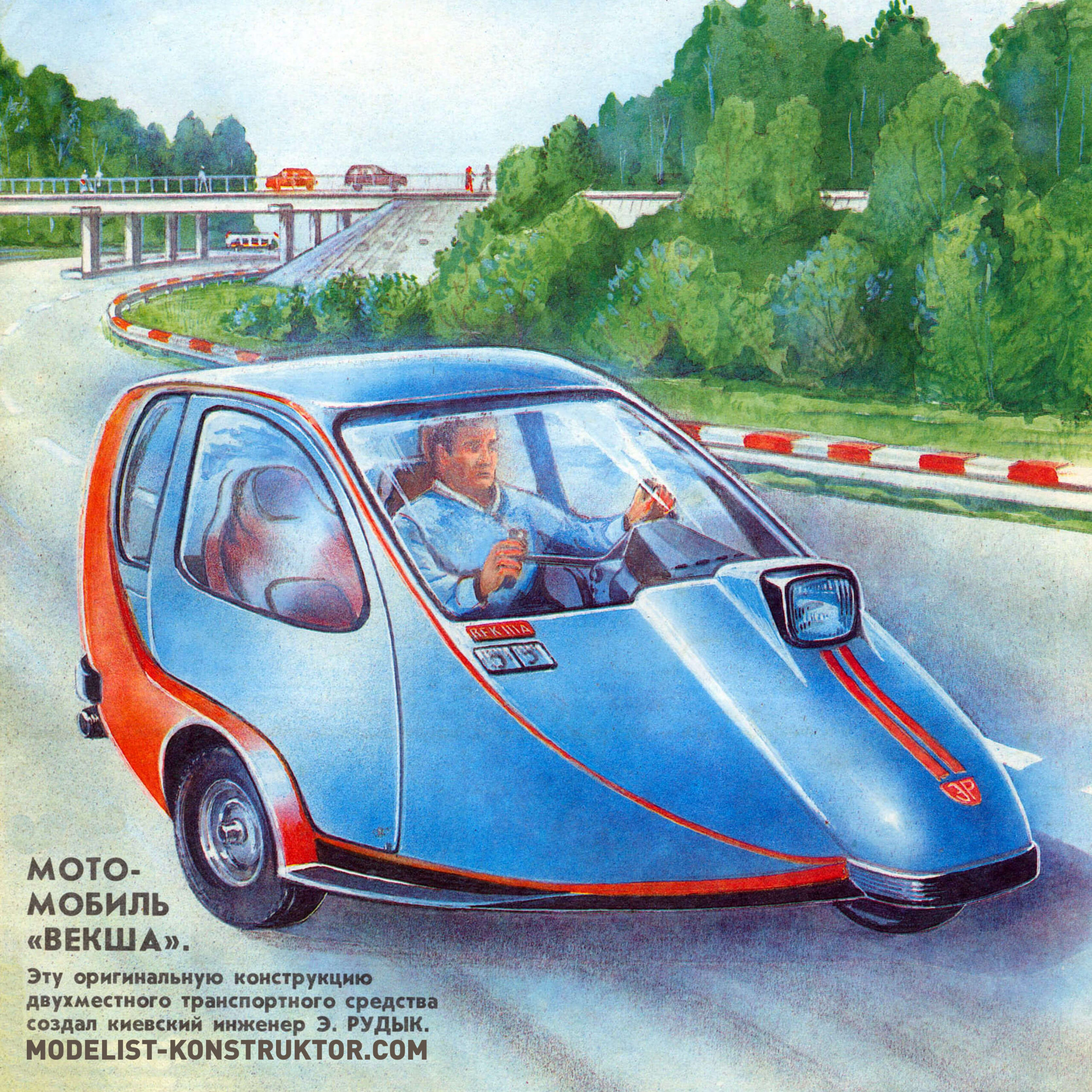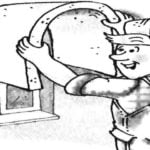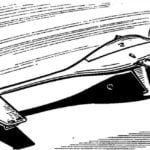Their paths diverged at the dawn of the automobile industry, and since then the lines of development have continued without intersecting until now… We are talking about a motorcycle and a car.
The former have always attracted consumers with their speed, maneuverability, simplicity, and, most importantly, relatively low retail price. The only quality has always caused fair criticism: the motorcycle, unfortunately, does not provide even basic comfortable conditions. Among them is the inconvenience of sitting – on horseback, in a position that leads to muscle stiffness on long trips. And “jumping” into the saddle of a motorcycle is not very convenient – this applies equally to the driver and the passenger.
A significant drawback of the motorcycle is its complete vulnerability to weather conditions, which makes this vehicle practically a summer vehicle. Not only that: even in good warm weather, a motorcyclist has to be suitably equipped to protect himself from wind and dust. Well, among other things, the insecurity of the driver and passengers does not contribute to injury safety.
The solution suggests itself, as it seems to me, obvious: equip a motorcycle with a side trailer with a closed fairing, and replace the motorcycle saddle-cushion with two car seats located side by side. Such a motorcycle, it seems to me, would be free from the above-mentioned shortcomings of a means of everyday use.
I bring to your attention the “Veksha” – one of the variants of such a motorcycle with an unusual engine location: on the side of the driving rear wheel, on its inner side.

1 — driver’s seat, 2 — front wheel with fork (from the “Tulitsa” scooter), 3 — rear (drive) wheel, 4 — passenger seat, 5 — T-200 type engine (from the “Tulitsa” scooter), 6 — gear and transmission gear, 7 — “broken” steering shaft with Hooke joints, 8 — fuel tank, 9 — side wheel, 10 — tubular frame.
This arrangement of the engine and the gas tank located above it allows you to free up space between the front and rear wheels for the driver and passenger seats. The passenger seat is easily removable; this allows, if necessary, to have a sufficiently large cargo area for transporting various weights, including long objects – up to 2.1 m. This area is also suitable for equipping a sleeping place for one person.
The fairing of the car, which I called a motor vehicle of asymmetrical shape (also corresponds to the asymmetrical layout of the chassis), is two-door. All these design features are incorporated into a motor vehicle – a vehicle whose chassis corresponds to the layout of a motorcycle with a sidecar, and the level of comfort for the driver and passenger is that of a regular passenger car.
The drawings and photographs reflect the manufacturing sequence of “Vekshi”. Its frame is flat, welded from steel pipes Ø 32 mm with a wall thickness of 2 mm. The engine is mounted on the frame using brackets similar to the brackets of the Tulitsa scooter (from which, in fact, the T-200M engine with a displacement of 200 cm 3 and a power of 14 hp was borrowed).

1 – T-200 type engine, 2 – transmission gear, 3 – motor vehicle frame, 4 – wheel hub (from a scooter), 5 – rear wheel axle, 6 – swing axis of the suspension trailing arm, 7 – transmission gear, 8 – shaft gear drive, 9 — flexible coupling, 10 — trailing arm, 11 — rear suspension shock absorber (from a motorcycle), 12 — bracket, 13 — hinge of the swing axis of the suspension arm, 14 — hinge support.
The torque from the output shaft of the gearbox is transmitted to the rear wheel not by a chain, as in most light and medium-sized motorcycles (as well as scooters), but through an elastic coupling to a pair of cylindrical gears: the smaller one is installed on the swing axis of the trailing arm of the suspension, and the larger one is on the rear wheel axle. In this case, the larger gear rolls around the smaller one in accordance with the vibrations of the suspension arm on uneven roads. The elastic element of the rear wheel suspension is a motorcycle rear shock absorber, hinged in a bracket welded to the frame.
The side wheel suspension is also made on a longitudinally swinging arm – similar to the rear wheel.
For the front “axle”, a standard “Tulitsa” scooter fork was used, complete with shock absorbers, a wheel and a steering column.
The Vekshi steering wheel is of a motorcycle type, with specially shaped handles. It is connected to the rotary fork using an intermediate shaft on two Hooke’s hinges. This scheme allows you to select the optimal tilt of the steering column in accordance with the driver’s seating position.
The fairing of the motorcycle is of a mixed design: it has a duralumin frame made of corner profiles curved according to patterns and a combined shell – partly also duralumin, made of a sheet 1 mm thick, and partly fiberglass.
So, first, a duralumin bottom is mounted on the frame of the motor vehicle, and then the fairing frame is assembled on it from an angle profile; The joints of the profiles are reinforced with gussets made of duralumin sheets. A safety arch is fixed in the middle part of the car – it is also duralumin, made of a “Tavr” profile; its shape corresponds to the cross section of the body.

1 – the basis of the machine – a frame with wheels, an engine and a fuel tank; 2 — machine frame with frame and floor mounted on it; 3 — the car frame is covered with fiberglass and duralumin sheets; 4 – fully assembled motor vehicle.
As already mentioned, the frame cladding is combined. First, the frame is sheathed with millimeter sheets of duralumin, and then covered with a layer of fiberglass with an epoxy binder. The roof and bottom of the motor vehicle are made only of fiberglass; The front wheel fairing and headlight housing are also laminated from the same material. After the resin has cured, the body is sanded and, if necessary, puttied, followed by sanding the surface. The hood above the front wheel is glued separately, using a plaster block.
Motor vehicle doors are also assembled from duralumin profiles covered with sheet duralumin and then covered with fiberglass fabric and epoxy resin. The interior is covered with sheet foam rubber and then with artificial leather.
The electrical equipment, instruments and controls of the motor vehicle correspond to the standard equipment of the Tulitsa motor scooter. Its maximum speed when driving with a passenger reaches 80 km/h. Fuel consumption per 100 kilometers at a speed of 70 km/h is 3.9 liters. The dry weight of the car is only 193 kg – that is, almost the same as that of a motorcycle with an Izh-type sidecar. The overall dimensions of the Veksha are also close to those of a motorcycle – 2110X1420X1325 mm.
As tests have shown, “Veksha” perfectly “holds” the road, is easy to control, and stable when cornering.
E. RUDYK, engineer, Kyiv



